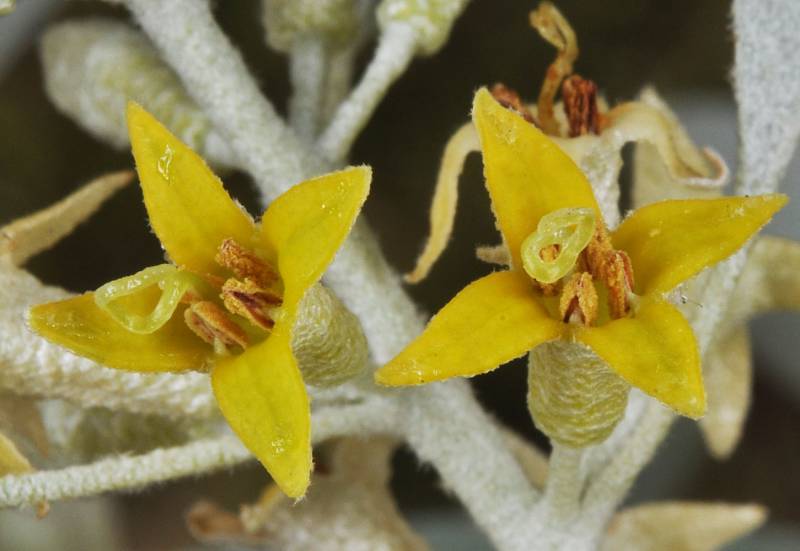Elaeagnus angustifolia
Elaeagnus umbellata
Russian-olive
autumn olive
Leaves alternate, linear, 3-7 cm. long, covered with minute scales which give the foliage a silvery appearance.
Leaves alternate, lanceolate to oval, 5-10 cm. long.
Flowers 1 or more in the leaf axils, perfect, pale yellow;
calyx tubular, 4-lobed;
petals none;
stamens 4, borne near the top of the calyx tube;
pistil 1-carpellary, the style short.
Flowers 6-8 mm. long, on pedicles in the leaf axils;
calyx tube much longer than it 4 lobes, pale rose within and silvery-scaly outside;
petals none;
stamens 4;
ovary 1-celled.
Fruit drupe-like, olive-shaped, gray, drying brown.
Drupe globose, 6-8 mm. in diameter, silvery, becoming red.
Elaeagnus angustifolia
Elaeagnus umbellata
Occurring east of the Cascades crest in Washington; British Columbia to California, east across North America to the Atlantic Coast.
Occurring in scattered locations on both sides of the Cascades crest in Washington; British Columbia to Oregon, also in Montana; central and eastern North America.
- Local floras:
BC,
CA,
OR,
WA
- Local Web sites:
CalFlora,
CalPhotos,
Flora NW,
PNW Herbaria
WildflowerSearch
iNaturalist (observations)
USDA Plants Database
- LBJ Wildflower Center
- SEINet
- Plants of the World Online
- Encyclopedia of Life
- Wikipedia
- Google Image Search
- Local floras:
BC,
OR,
WA
- Local Web sites:
Flora NW,
PNW Herbaria
WildflowerSearch
iNaturalist (observations)
USDA Plants Database
- LBJ Wildflower Center
- SEINet
- Plants of the World Online
- Encyclopedia of Life
- Wikipedia
- Google Image Search



